Marina Jirotka
A Simulated real-world upper-body Exoskeleton Accident and Investigation
Nov 21, 2024


Abstract:This paper describes the enactment of a simulated (mock) accident involving an upper-body exoskeleton and its investigation. The accident scenario is enacted by role-playing volunteers, one of whom is wearing the exoskeleton. Following the mock accident, investigators - also volunteers - interview both the subject of the accident and relevant witnesses. The investigators then consider the witness testimony alongside robot data logged by the ethical black box, in order to address the three key questions: what happened?, why did it happen?, and how can we make changes to prevent the accident happening again? This simulated accident scenario is one of a series we have run as part of the RoboTIPS project, with the overall aim of developing and testing both processes and technologies to support social robot accident investigation.
A Transparency Paradox? Investigating the Impact of Explanation Specificity and Autonomous Vehicle Perceptual Inaccuracies on Passengers
Aug 16, 2024Abstract:Transparency in automated systems could be afforded through the provision of intelligible explanations. While transparency is desirable, might it lead to catastrophic outcomes (such as anxiety), that could outweigh its benefits? It's quite unclear how the specificity of explanations (level of transparency) influences recipients, especially in autonomous driving (AD). In this work, we examined the effects of transparency mediated through varying levels of explanation specificity in AD. We first extended a data-driven explainer model by adding a rule-based option for explanation generation in AD, and then conducted a within-subject lab study with 39 participants in an immersive driving simulator to study the effect of the resulting explanations. Specifically, our investigation focused on: (1) how different types of explanations (specific vs. abstract) affect passengers' perceived safety, anxiety, and willingness to take control of the vehicle when the vehicle perception system makes erroneous predictions; and (2) the relationship between passengers' behavioural cues and their feelings during the autonomous drives. Our findings showed that passengers felt safer with specific explanations when the vehicle's perception system had minimal errors, while abstract explanations that hid perception errors led to lower feelings of safety. Anxiety levels increased when specific explanations revealed perception system errors (high transparency). We found no significant link between passengers' visual patterns and their anxiety levels. Our study suggests that passengers prefer clear and specific explanations (high transparency) when they originate from autonomous vehicles (AVs) with optimal perceptual accuracy.
S-RAF: A Simulation-Based Robustness Assessment Framework for Responsible Autonomous Driving
Aug 16, 2024



Abstract:As artificial intelligence (AI) technology advances, ensuring the robustness and safety of AI-driven systems has become paramount. However, varying perceptions of robustness among AI developers create misaligned evaluation metrics, complicating the assessment and certification of safety-critical and complex AI systems such as autonomous driving (AD) agents. To address this challenge, we introduce Simulation-Based Robustness Assessment Framework (S-RAF) for autonomous driving. S-RAF leverages the CARLA Driving simulator to rigorously assess AD agents across diverse conditions, including faulty sensors, environmental changes, and complex traffic situations. By quantifying robustness and its relationship with other safety-critical factors, such as carbon emissions, S-RAF aids developers and stakeholders in building safe and responsible driving agents, and streamlining safety certification processes. Furthermore, S-RAF offers significant advantages, such as reduced testing costs, and the ability to explore edge cases that may be unsafe to test in the real world. The code for this framework is available here: https://github.com/cognitive-robots/rai-leaderboard
Effects of Explanation Specificity on Passengers in Autonomous Driving
Jul 02, 2023Abstract:The nature of explanations provided by an explainable AI algorithm has been a topic of interest in the explainable AI and human-computer interaction community. In this paper, we investigate the effects of natural language explanations' specificity on passengers in autonomous driving. We extended an existing data-driven tree-based explainer algorithm by adding a rule-based option for explanation generation. We generated auditory natural language explanations with different levels of specificity (abstract and specific) and tested these explanations in a within-subject user study (N=39) using an immersive physical driving simulation setup. Our results showed that both abstract and specific explanations had similar positive effects on passengers' perceived safety and the feeling of anxiety. However, the specific explanations influenced the desire of passengers to takeover driving control from the autonomous vehicle (AV), while the abstract explanations did not. We conclude that natural language auditory explanations are useful for passengers in autonomous driving, and their specificity levels could influence how much in-vehicle participants would wish to be in control of the driving activity.
An Ethical Black Box for Social Robots: a draft Open Standard
May 13, 2022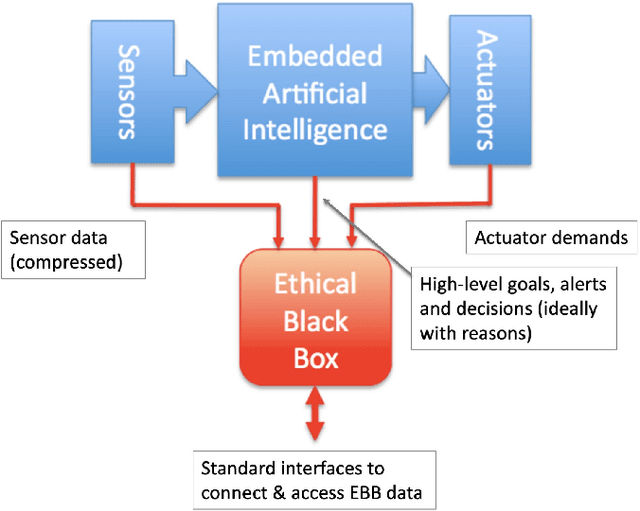


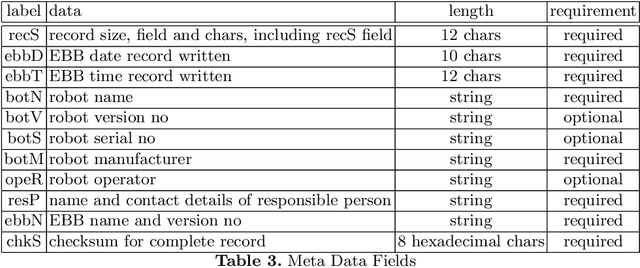
Abstract:This paper introduces a draft open standard for the robot equivalent of an aircraft flight data recorder, which we call an ethical black box. This is a device, or software module, capable of securely recording operational data (sensor, actuator and control decisions) for a social robot, in order to support the investigation of accidents or near-miss incidents. The open standard, presented as an annex to this paper, is offered as a first draft for discussion within the robot ethics community. Our intention is to publish further drafts following feedback, in the hope that the standard will become a useful reference for social robot designers, operators and robot accident/incident investigators.
From Spoken Thoughts to Automated Driving Commentary: Predicting and Explaining Intelligent Vehicles' Actions
Apr 19, 2022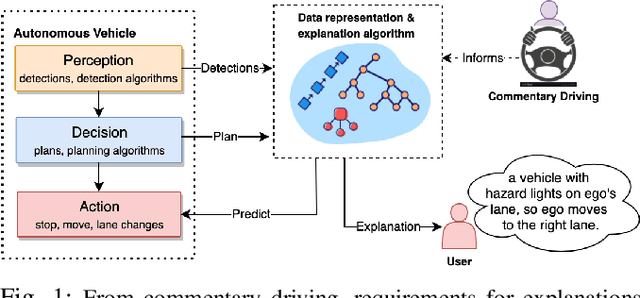

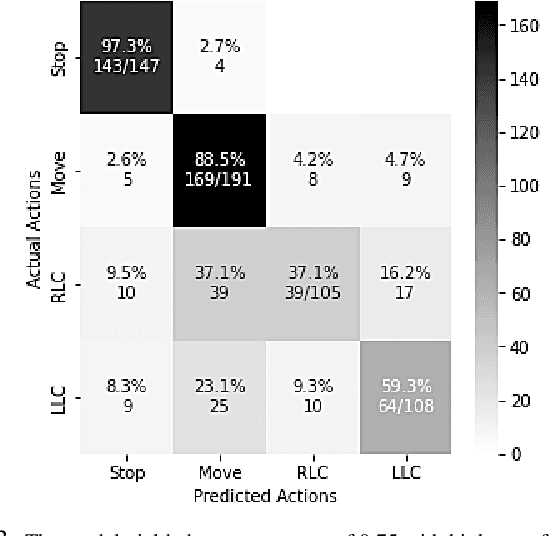

Abstract:Commentary driving is a technique in which drivers verbalise their observations, assessments and intentions. By speaking out their thoughts, both learning and expert drivers are able to create a better understanding and awareness of their surroundings. In the intelligent vehicle context, automated driving commentary can provide intelligible explanations about driving actions, and thereby assist a driver or an end-user during driving operations in challenging and safety-critical scenarios. In this paper, we conducted a field study in which we deployed a research vehicle in an urban environment to obtain data. While collecting sensor data of the vehicle's surroundings, we obtained driving commentary from a driving instructor using the think-aloud protocol. We analysed the driving commentary and uncovered an explanation style; the driver first announces his observations, announces his plans, and then makes general remarks. He also made counterfactual comments. We successfully demonstrated how factual and counterfactual natural language explanations that follow this style could be automatically generated using a simple tree-based approach. Generated explanations for longitudinal actions (e.g., stop and move) were deemed more intelligible and plausible by human judges compared to lateral actions, such as lane changes. We discussed how our approach can be built on in the future to realise more robust and effective explainability for driver assistance as well as partial and conditional automation of driving functions.
Explanations in Autonomous Driving: A Survey
Mar 11, 2021



Abstract:The automotive industry is seen to have witnessed an increasing level of development in the past decades; from manufacturing manually operated vehicles to manufacturing vehicles with high level of automation. With the recent developments in Artificial Intelligence (AI), automotive companies now employ high performance AI models to enable vehicles to perceive their environment and make driving decisions with little or no influence from a human. With the hope to deploy autonomous vehicles (AV) on a commercial scale, the acceptance of AV by society becomes paramount and may largely depend on their degree of transparency, trustworthiness, and compliance to regulations. The assessment of these acceptance requirements can be facilitated through the provision of explanations for AVs' behaviour. Explainability is therefore seen as an important requirement for AVs. AVs should be able to explain what they have 'seen', done and might do in environments where they operate. In this paper, we provide a comprehensive survey of the existing work in explainable autonomous driving. First, we open by providing a motivation for explanations and examining existing standards related to AVs. Second, we identify and categorise the different stakeholders involved in the development, use, and regulation of AVs and show their perceived need for explanation. Third, we provide a taxonomy of explanations and reviewed previous work on explanation in the different AV operations. Finally, we draw a close by pointing out pertinent challenges and future research directions. This survey serves to provide fundamental knowledge required of researchers who are interested in explanation in autonomous driving.
Robot Accident Investigation: a case study in Responsible Robotics
May 15, 2020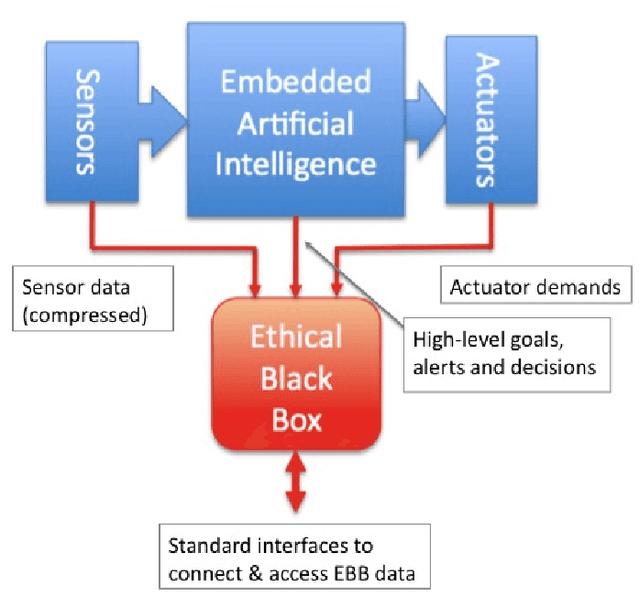
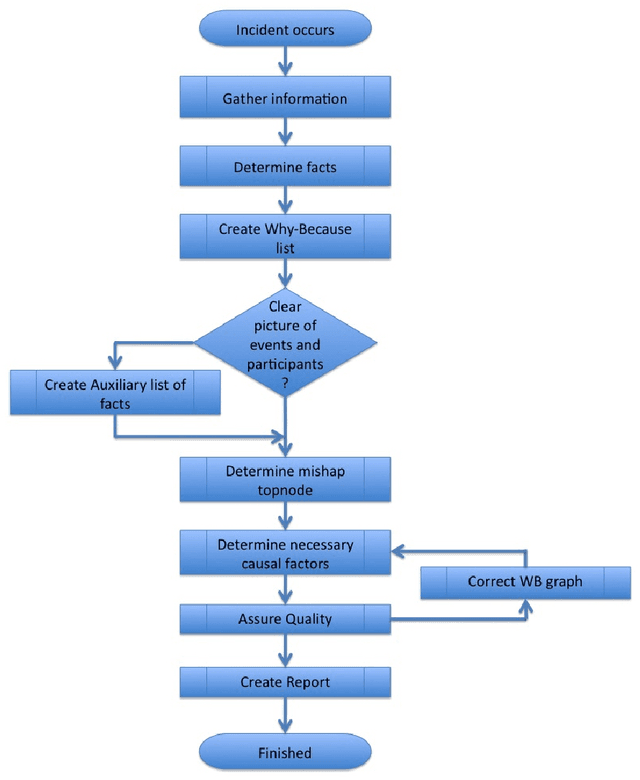
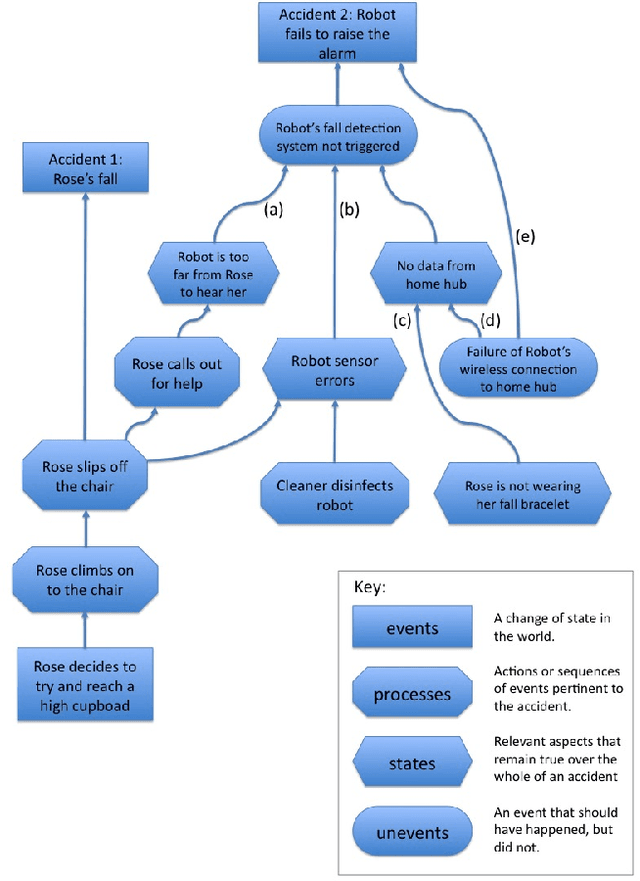
Abstract:Robot accidents are inevitable. Although rare, they have been happening since assembly-line robots were first introduced in the 1960s. But a new generation of social robots are now becoming commonplace. Often with sophisticated embedded artificial intelligence (AI) social robots might be deployed as care robots to assist elderly or disabled people to live independently. Smart robot toys offer a compelling interactive play experience for children and increasingly capable autonomous vehicles (AVs) the promise of hands-free personal transport and fully autonomous taxis. Unlike industrial robots which are deployed in safety cages, social robots are designed to operate in human environments and interact closely with humans; the likelihood of robot accidents is therefore much greater for social robots than industrial robots. This paper sets out a draft framework for social robot accident investigation; a framework which proposes both the technology and processes that would allow social robot accidents to be investigated with no less rigour than we expect of air or rail accident investigations. The paper also places accident investigation within the practice of responsible robotics, and makes the case that social robotics without accident investigation would be no less irresponsible than aviation without air accident investigation.
 Add to Chrome
Add to Chrome Add to Firefox
Add to Firefox Add to Edge
Add to Edge